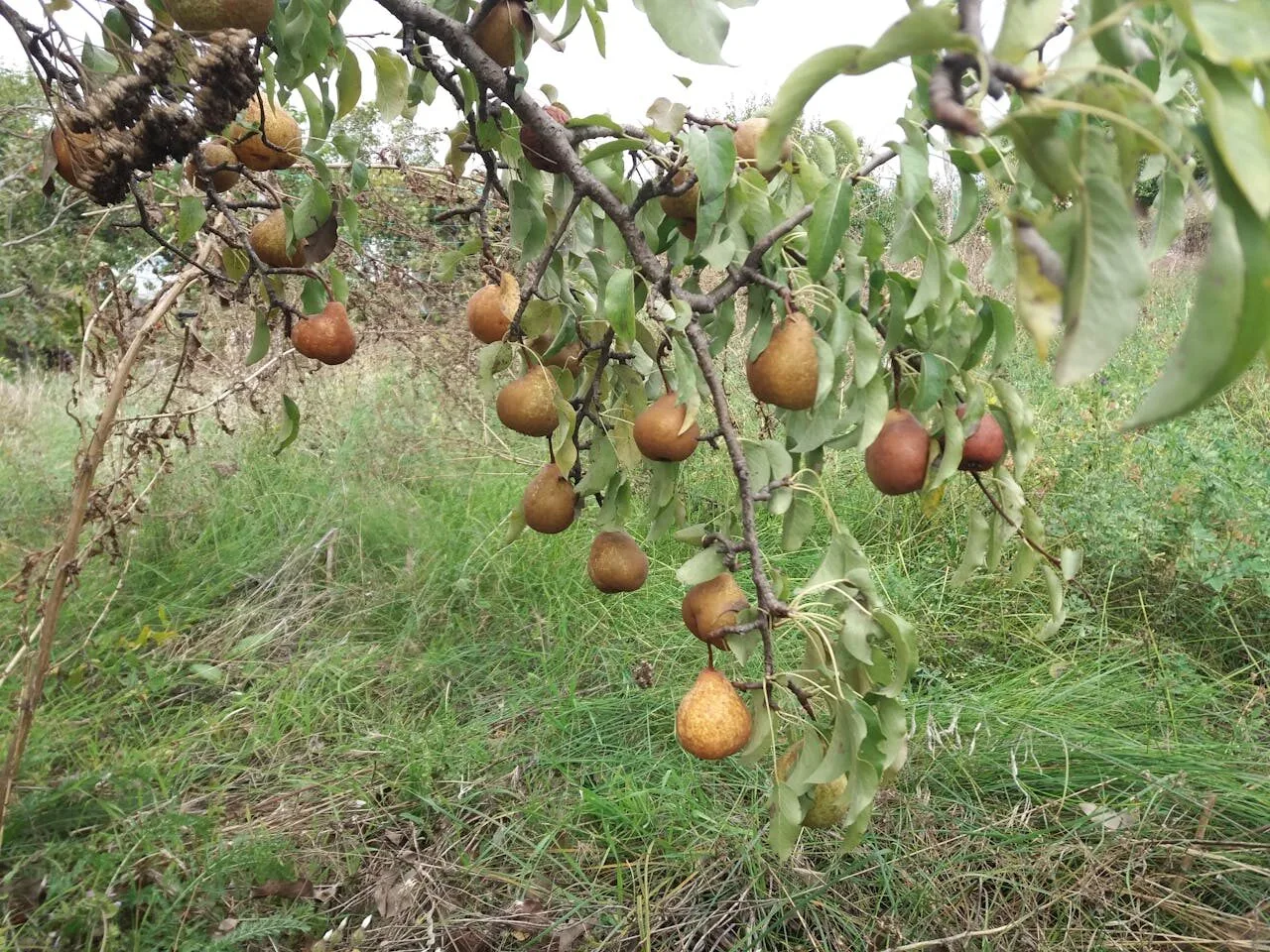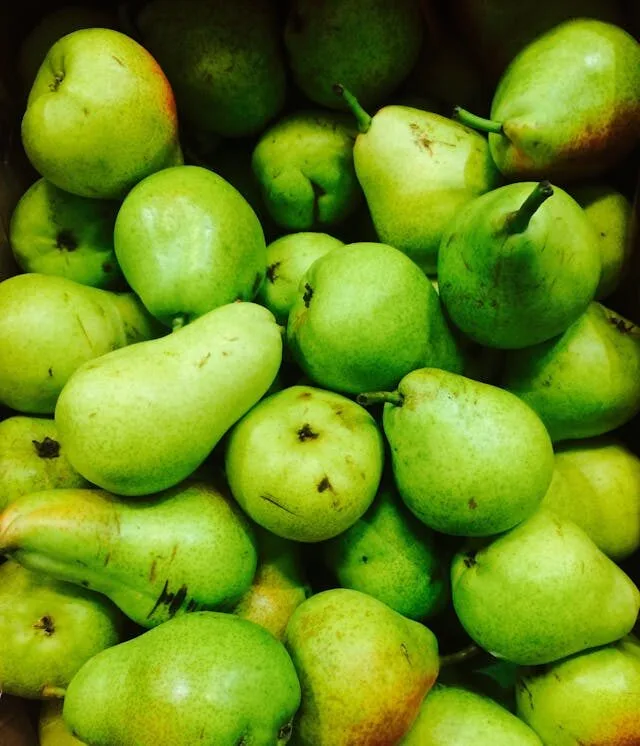Have you ever stood beneath the tangled canopy of a pear tree, secateurs in hand, unsure where to begin? You’re not alone. Pruning a pear tree can feel like surgery with gardening gloves on, but with the right approach (and maybe a little help), it becomes a rewarding part of the gardening year.
Whether you’re a seasoned grower or someone who simply loves the idea of picking pears from your own garden, this guide will walk you through everything you need to know. And if at any point it all feels a bit too much, calling in professionals like Woodfelder Tree Care can turn stress into satisfaction.
Key Takeaways for Gardeners
- Pruning pear trees maintains their health, balance, and productivity
- The best time for pruning is late winter or early spring, when trees are dormant
- Proper tools and maintenance ensure efficient and precise pruning
- Young and mature trees need different pruning approaches
- Post-pruning care, including fertilisation, boosts fruit yield
Understanding the Importance of Pruning Pear Trees
Pruning isn’t just about appearances. It’s about giving your tree the structure and strength it needs to thrive. Think of it as a wellness check-up, minus the doctor, with loppers as your tools. When you remove dead, crowded, or diseased branches, you’re helping light and air reach every part of the tree, which can keep pests and diseases at bay.
It also encourages your tree to grow stronger and more fruitfully. Basically, better care leads to better pears! And when done with care, whether by an experienced gardener or a professional like Woodfelder, the results are excellent. Your pears will be larger, sweeter, and more uniformly beautiful.
Best Time of Year for Pruning Pear Trees – Winter or Spring?
The timing of your pruning sessions can greatly influence the health and productivity of your pear trees. But, with so many factors to juggle, when should you pick up those shears?
Why winter is best
The best time to prune is late winter or early spring, when the tree is still dormant but readying itself for new growth. This timing minimises stress, aids healing, and promotes better yields. Winter pruning encourages healthy sprouting from dormant buds and aligns with natural growth cycles.
Avoiding Summer Risks
While timing is crucial, weather significantly influences pruning success. Dry, mild weather creates ideal conditions with crisp air and warm sun, while wet, frosty weather can damage trees and raise disease risk. If pruning during summer, check the weather forecast to prune on clear, calm days, which will reduce the risk of fungal infections or disease. This is especially important when large branches or dense canopies cause excessive shade, limiting air flow during hotter weather, which is another risk factor in developing infections.
You can read more about Why Timing is Key for Fruit Trees in the UK here
Necessary Tools for Thinning Pear Trees
Whether you’re tackling the simple task of removing a few troublesome offshoots or preparing for a more comprehensive pruning project, having the right tools at your disposal is critical. But which equipment is genuinely indispensable?
For efficient pear tree pruning, use sharp, high-quality hand pruners for small branches, and loppers with long handles for thicker out-of-reach limbs. A pruning saw is ideal for large branches. Keep all tools clean and sharp to make cutting easy and prevent poor cuts.
Proper maintenance prolongs the life of your pruning tools and boosts their performance. Regular cleaning helps prevent the spread of disease, requiring only a cloth and disinfectant. Keeping tools sharp maintains efficiency, requiring less effort and ensuring precise cuts. Oil metal parts to prevent rust, ensuring smooth cuts, and store tools in a dry place to avoid degradation. A little care now means your tools and your trees will reward you for seasons to come.

Basic Pruning Techniques for Healthy Pear Trees
Knowing when and what to prune is only half the battle. Using proper techniques ensures not only a neat finish but the renewed vigour and longevity of your pear trees. How should you proceed with specific steps to foster young trees towards a bountiful future? Here’s a quick step by step guide.
Step-by-step guide on how to prune young pear trees
Start by inspecting your pear tree carefully. Remove any dead, crossing, or damaged branches, then assess the overall shape. Focus on the central trunk and select well-spaced main branches to form the framework. Cut back new growth by about a third, making clean cuts close to the branch collar to promote healing. As you work around the tree, remove any shoots or branches that don’t fit the desired shape. Step back regularly to review your progress before making further pruning cuts.
Proper training and shaping are essential to encourage strong structure and long-term productivity in pear trees. There are two key approaches: formative pruning and decorative training systems like espalier or pleaching.
Formative pruning involves guiding the tree’s natural growth in its early years by removing poorly positioned branches, such as those that cross, grow inward, or emerge at weak angles. This helps establish a strong, balanced framework and reduces the likelihood of structural problems as the tree matures.
In contrast, decorative training methods like espalier or pleaching are often used in ornamental gardens or where space is limited. These techniques shape young trees into a flat, two-dimensional form by tying new growth to a fixed framework. While aesthetically striking, they also promote controlled fruiting and easy maintenance.
Both approaches require a good understanding of the tree’s growth habits and a steady hand. A professional arborist will know which method suits your space, goals, and tree variety best, ensuring a healthier, more productive pear tree for years to come.
Adjusting pruning strategies for older pear trees
Mature pear trees, like fine wine, improve with cautious handling. Older trees have established networks, so pruning must shift from tender young growth. Prune less aggressively to preserve health and fruiting. Focus on trimming deadwood and interior growth that impedes airflow for longevity. Each tree has its own story, requiring tailored pruning. Respect the unique features and eccentricities of older trees.
Dealing with overgrown or neglected pear trees
Have you encountered an unruly, overgrown tree needing patience and care? Don’t rush it. Rejuvenate it with selective pruning over seasons, removing congested growth to improve light and air. Re-establish the tree’s structure gradually, avoiding drastic measures, and give it time to recover. With patience, you’ll revive the tree, shedding winter blues and seeing the results.
Addressing Common Issues While Pruning Pear Trees
Despite careful planning and methodical trimming, even the most dedicated gardener can face unforeseen challenges during pruning. Navigating these hurdles is crucial to sustaining a thriving, pest-free orchard. Pruning mistakes can set pear trees back, mostly due to misunderstanding their growth and responses.
Over-pruning & Improper cuts
Over-pruning can shock and weaken the tree, while improper cuts, like leaving stubs instead of pruning to the branch collar, can cause disease and dieback.
Not giving regular inspections
Pruning can leave trees temporarily vulnerable to pests and diseases, especially if cuts aren’t clean or tools aren’t sanitised. Regular inspections help catch issues early, emphasising the importance of routine checks. Here are some pear plant problems to look out for:
- Shrivelled fruit hanging on branches? Likely brown rot — prune and bin or burn it.
- Flaky, sunken patches on branches? It could be pear canker. Cut out affected growth unless it’s on a main limb.
- Brown, wilted blossoms in spring? May be blossom wilt — a common fungal infection.
- Lots of dead branches without clear cause? Could signal root system issues like honey fungus — get it checked.
- Cavities in trunk or limbs? Often harmless, but don’t drill to drain them. Seek advice if the cavity grows or fungus appears.
If in doubt, call Woodfelder Tree Care to assess the tree’s health.
Not understanding how they grow
Instead of trial and error, follow a pruning strategy based on tree biology. Know which branches to remove, how growth responds, and when to cut to minimise stress. A professional considers structure, light penetration, and long-term health, not just appearance. So, if in doubt, it’s best to contact the professionals.
The RHS gardening blog has more great advice on pruning pear trees.

Tips for Maximising Crop
Just as no great chef walks away after whipping up a culinary masterpiece, ensuring ripe yields necessitates follow-up care after pruning. Promoting fruit-bearing and better fruit size and taste is an ongoing process that looks for moments of precision, care, and delicate nurturing.
Methods to encourage fruit-bearing through strategic pruning
The goal of pruning for productivity is twofold: remove a portion of older wood each winter to stimulate new growth, and maintain a structure that favours young, fruiting wood, ideally between one and four years old, as this tends to produce the best yields.
Focus on creating an open, balanced canopy that allows sunlight to reach the inner branches. Good light exposure helps ripen both shoots and fruit, while improved airflow reduces the risk of fungal diseases. Regular monitoring helps you adjust your approach based on the tree’s response, ensuring consistent, high-quality, delicious fruit season after season.
Fertilisation and care tips post-pruning for increased fruit yield
Combine pruning with balanced fertilisation to help your tree recover and thrive in the growing season ahead. Prune purposefully and use mulch and irrigation to build strength. Adjust fertiliser plans to meet the upcoming needs of fruit development.
Safety Measures to Follow When Pruning Branches
While gardening offers rewarding and peaceful moments, safety is crucial. Protect yourself when handling pruning tools by wearing gloves and eyewear, and secure ladders for stability. Stay aware of your surroundings to prevent accidents, and use proper techniques to avoid damaging the tree. Clear away pruned branches and debris as you go to prevent attracting pests. Make clean, angled cuts close to the branch collar to help the tree heal quickly and reduce the risk of infection. Espalier pruning requires collaboration with your juvenile trees, combining efficiency with care, leading to beautiful, healthy growth and memorable gardening experiences.
Summary: Sometimes, It Pays to Call in the Experts
Pruning pear trees isn’t just a chore; it’s a blend of care, vision, and technique. Done well, it leads to healthier trees, a more beautiful garden, and a better harvest. But let’s be honest: it’s not always simple. If your tree is large, neglected, or simply beyond your comfort zone, don’t let that stop you. Calling in a professional like Woodfelder means less stress and no guesswork. Just thriving trees, tasty pears, and more time enjoying your garden, not wrestling with it.
Mastering the art of pruning is a commitment to fruitful stewardship. With the right timing, sharpened tools, and sound knowledge, you can rejuvenate your tree and inspire new growth. But you don’t have to go it alone. So next time you’re standing under that pear tree, clippers in hand and doubt creeping in, remember, help is just a call away.
Ready for a transformation? Call us on 0161 327 3011 for a free, no-obligation quote. We’ll help you cultivate a pear tree that thrives for seasons to come and develop your garden design with fruit trees in mind.
Frequently Asked Questions about Pear Trees
Other questions about pruning pear trees.
How often should I prune my pear tree?
It is recommended to prune pear trees once a year during the dormant season, ideally in late winter or early spring before new growth begins. Regular pruning will help maintain the tree’s shape, promote healthy growth, and improve fruit production.
What tools do I need to prune a pear tree?
To prune a pear tree effectively, you will need a pair of sharp pruning shears, loppers for thicker branches, and a pruning saw for larger limbs. It is also helpful to have gloves for protection and a ladder to reach higher branches safely.
How do I prune a young pear tree?
When pruning a young pear tree, focus on developing a strong, central trunk and selecting scaffold branches. Remove any competing or crossing branches, as well as any dead or diseased wood. Aim to create an open canopy that allows for good air circulation and light penetration.
Can I prune a pear tree in summer?
Pruning a pear tree in summer is generally not recommended, as it can stress the tree and leave it vulnerable to disease. It is best to prune during the dormant season in late winter or early spring when the tree is not actively growing. If you do prune in summer, ensure you have clear weather over the next week to reduce the risk to your tree.
